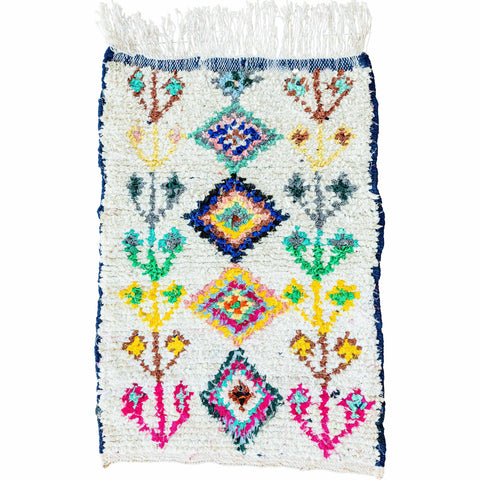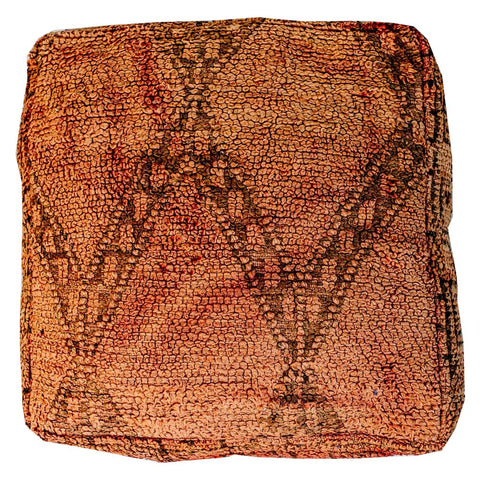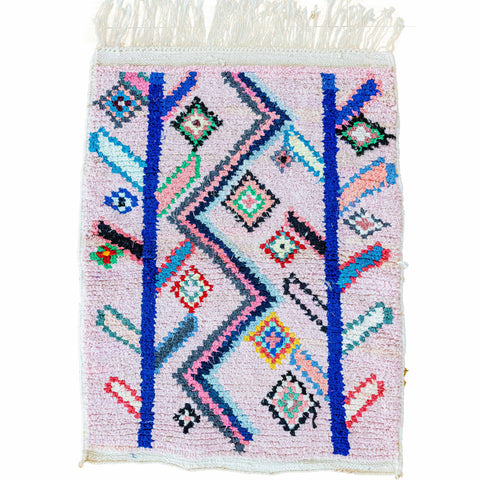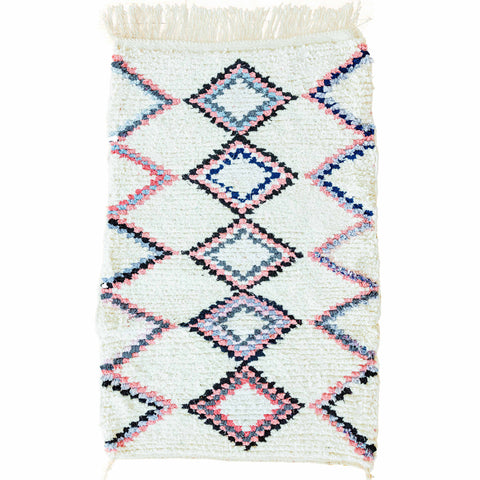The Ultimate Guide to Rug Repairs - How to Fix A Rug

Crafted by Berber artisans. Curated by decor enthusiasts
Do you have a damaged rug? Worry not. Whether your rug is made of polyester or intricate silk, it is easier than you think to restore a rug and make it look pristine again.
Rug repair typically is not something you are able to do by yourself. This will be true for those with delicate pieces, including Oriental rugs. Bringing your rug over to a repair specialist is usually the best option for you if you would like to retain its condition for years to come.
Before bringing your rug over to a specialist, you should know a couple of things about what the process entails, and if it is actually necessary for you to do this. Here is what to keep in mind about repairing rugs.
How Much Maintenance Do Rugs Require?
Anytime your rug shows symptoms of wear/tear, you are encouraged to have it fixed. You might have recently moved, and the rug experienced some damages along the way. Perhaps your Oriental rug is starting to unravel or snag. Maybe its colors have gradually faded, and you’re interested in restoring its condition.
Repairing damages might warrant adjusting the rug’s pattern or removing an aspect of its design. If you’re interested in making the rug look a certain way – perhaps how it initially did – you are encouraged to have it repaired sooner than later. That is because the rug is capable of reaching a point where it can no longer be repaired.
No matter how bad the damages are, postponing the work will only worsen the problem over time – to the point where it will become too costly to repair.
What Damages Are Capable of Being Repaired?
Fringe is a common area for wear/tear. Because fringes are exposed and delicate, they are very susceptible to damages. Any loose sides or fringes should be fixed as quickly as possible. Doing so will prevent the section surrounding it from unraveling.
Fortunately, fringe repairs happen to be less expensive and much easier to repair in contrast to the primary pile. Repairs might involve merging a fringe directly into the rug’s side, or adding a replacement fringe. We might have a portion of a pile pulled out from a fine antique rug, then start wrapping stitches around each thread to resemble the original look of the rug.
Tears also happen to be easy to repair if they are fixed as soon as possible. Torn rugs might unravel before becoming harder to repair.
If you have a rug that has a recent, clean tear, we’ll make it seem as though the imperfection never happened. Repairs of tears typically involve putting back the warps, then reconstructing the affected portion of your rug.
Maintenance should also be sought for any holes – small as they may be – in the center of a rug. Generally, holes can be fixed if the material surrounding the hole remains in decent condition.
This repair work will be more expensive because it warrants re-weaving. If it isn’t fixed right away, the process will become more costly (if not impossible to do). Having a rug re-weaved can be challenging, especially if the goal is to make it resemble the original. These types of repairs might be more apparent if you’re keeping an eye out for them. Brand-new yarn won’t seamlessly match the original aged one.
Most damages are capable of affecting your rug and can be repaired based on their severity.
If the rug contains missing color and thread patches, it may be because of moths. Be mindful of future damages if the rug was made from wool and other materials vulnerable to moths.
Mildew, water, or mold could rot the rug’s underlying fibers - particularly for Pacific Northwest residents. Damages may be incurred if the area rug isn’t given time to dry after a cleaning. While water damages are usually repairable if they are mild, moldy rugs might need outright replacement.
When it comes to rot, you don’t have a lot of options. If there are repairable damages, we might have the ability to save the rug simply by cutting a section out of it. While the rug will likely be smaller, it will last much longer.
What Happens If My Rug Cannot Be Repaired?
A majority of rug damages are repairable if the rug is taken to an expert. Occasionally, repairs might be cost-prohibitive. Also, it may not resemble the original. You might have to throw an old rug out, then replace it with a brand-new one.
With that said, the rug might still be usable if it is worn out. It could be converted into another type of decoration – perhaps some wall hanging or pillow.
As mentioned earlier, replacement of the rug might be necessary if it is too moldy. Don’t put your health – or your kids – at risk. Speak with a professional before getting rid of your rug, though. Maybe your damages are mild enough for removal.
Is Repairing the Rug Worth It?
The answer is contingent on your circumstances. Ask yourself the following questions:
- How expensive was your rug? If it was a costly item, then paying maintenance costs will probably be justified, even if they are relatively high. It can be quite expensive to have handmade and Oriental rugs replaced.
- Has it been a part of the family for a while? No matter how cheap the rug is, memories that are associated with it can never be replaced. Your rug’s sentimental value might be much higher in comparison to its financial value.
- Is the rug anchored by interior design? A authentic moroccan rug typically is a key element of a room, and usually ties everything in it together. Choosing a different rug that matches with everything – including other decor, furniture, and color schemes – might take a very long time. Investing in rug repair might cost the same as the purchase of a new one.

































